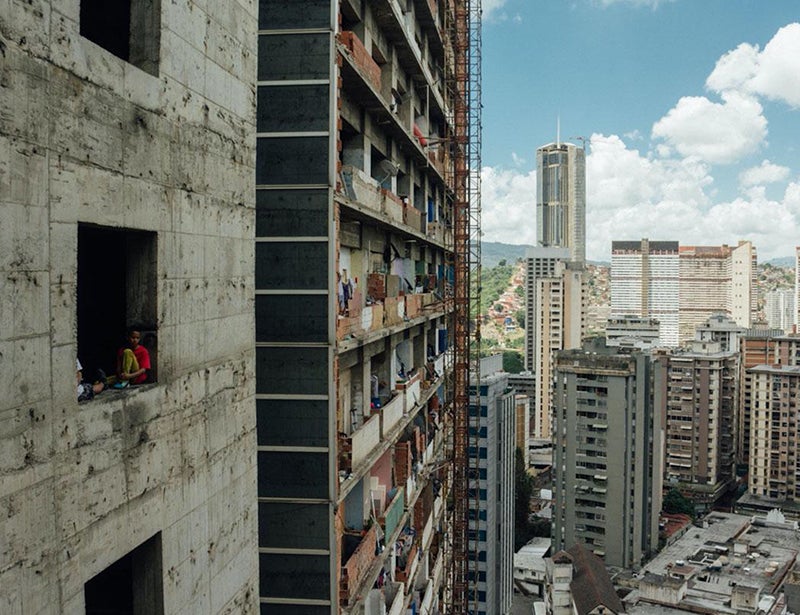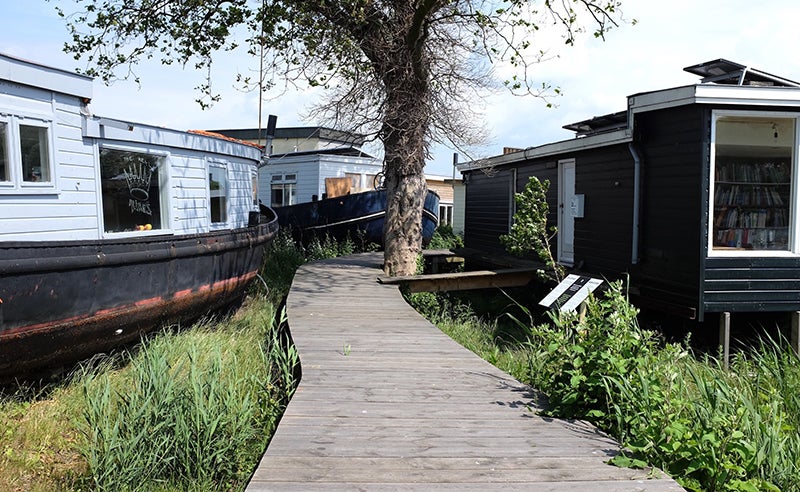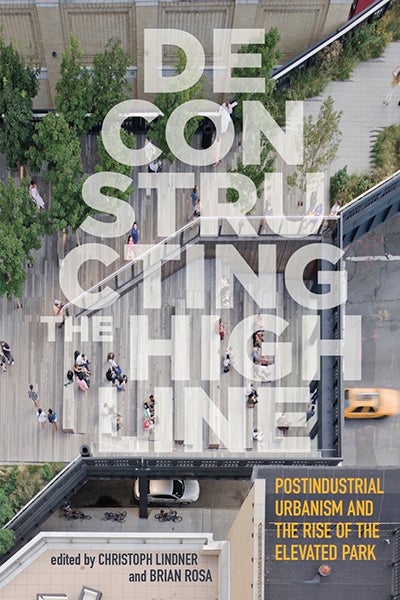A&AA Dean Christoph Lindner undertook a lecture tour in England and Ireland in January, exploring topics including urban renewal on Amsterdam’s waterfront, the “aesthetics of slowness” in global cities, New York’s High Line elevated park, and the urban politics of Brutalism.

Above: Glasgow’s Red Road ghost towers, prepped for demolition. Photo by Christoph Lindner.
The lectures served as a prelude to the forthcoming publication of Deconstructing the High Line: Postindustrial Urbanism and the Rise of the Elevated Park (Rutgers University Press, May 2017), which he co-edited with Brian Rosa of Queens College, City University of New York.
Lindner’s public lecture at the Bartlett School of Architecture in London examined how the High Line, an iconic linear park on a former elevated railway in New York City, constitutes “an experiment in slow practice aimed at countering, while simultaneously contributing to, the amnesiac speed-space of the accelerated city.”
The High Line, celebrated as a monument to community-led activism, adaptive re-use of urban infrastructure, and innovative ecological design, has become a contested model for urban redevelopment worldwide. Lindner’s book analyzes the High Line and various spin-off projects.
Lindner explored vacant architecture, derelict homes, ghost skyscrapers, and dormant museums in a talk entitled “Travels in Spectral Urbanism” at the School of Advanced Study at the University of London.
“The focus was on architectural ruins and the ways in which they produce various forms of ghost living—that is, informal, unregulated, and largely unseen forms of insecure housing and precarious living that range from homeless squatting, to slum dwelling, to the black market in illegal luxury rentals,” he said.

Above: A&AA Dean Christoph Lindner
At the London Science Museum, he highlighted connections between Brutalist architecture, ruin aesthetics, and the violence of globalization.
“Looking at examples in Caracas, London, and Paris, I explored how Brutalist architecture can resist the global city's addiction to gentrification, stylized boutique living, and glossy, generic architecture,” Lindner said. “This is precisely because of Brutalism’s historical ties to urban activism around issues of spatial justice, affordable housing, social equity, human health, and even radical design.”
At the Port Perspectives Seminar in Dublin Port, Ireland, Lindner described various creative projects in and around Amsterdam’s waterfront aimed at revitalizing urban spaces and communities.
“My examples included an ‘art city’ incubator in a former ship-building yard, a floating eco-village, and a green-tech artist colony located on toxic land,” he said. “My aim was to try to see whether it’s possible to distinguish between creative projects that are substantive and impactful in the way they intervene in the urban environment, versus projects that revolve around hype, hysteria, and a superficial engagement with place.”
Lindner’s other recent book publications include Imagining New York City (Oxford University Press, 2015), Global Garbage (Routledge, 2016), and Cities Interrupted: Visual Culture and Urban Space (Bloomsbury, 2016).

Above: The Torre David in Caracas, Venezuela, where hundreds of families squatting in an abandoned skyscraper were forcibly evicted by the government. Photo courtesy Gobierno Bolivariano de Venezuela.

Above: De Ceuvel, a temporary eco-community on a canal in Amsterdam, was premised on the idea of cleaning up the area’s pollution then placing refurbished houseboats on the newly green site as creative workspaces. In his lecture in Dublin, Lindner aimed “to try to see whether it’s possible to distinguish between creative projects that are substantive and impactful … versus projects that revolve around hype, hysteria, and a superficial engagement with place.” Photo by Christoph Lindner.

